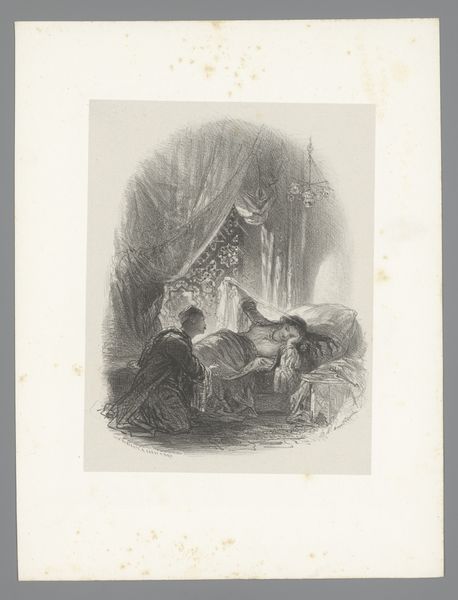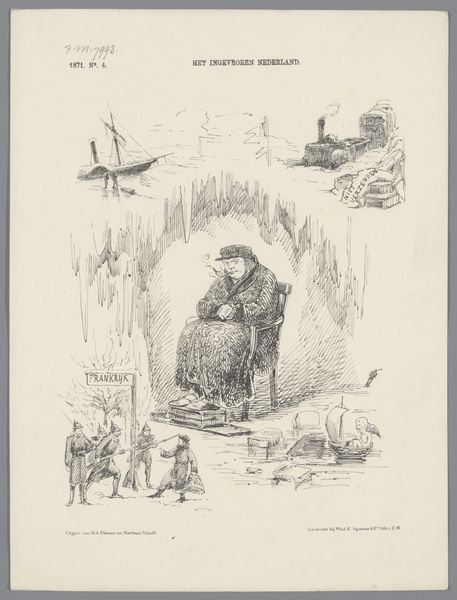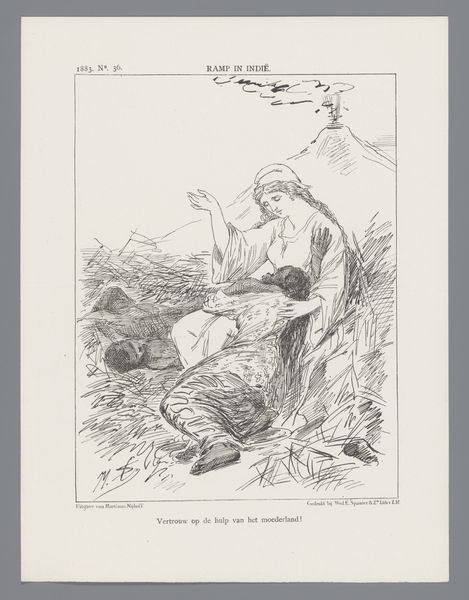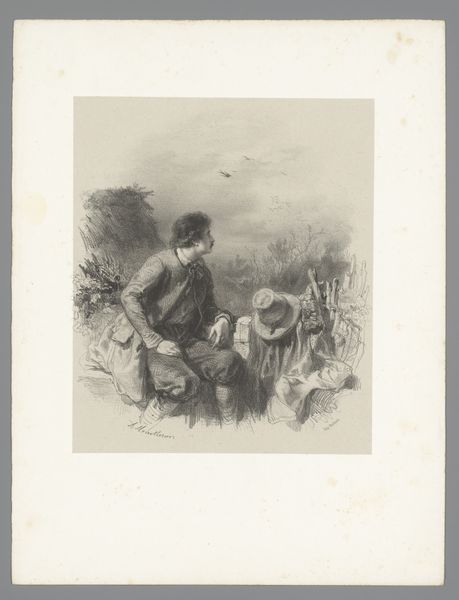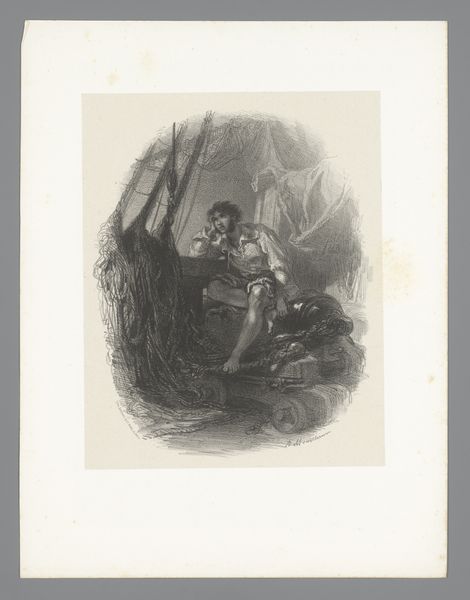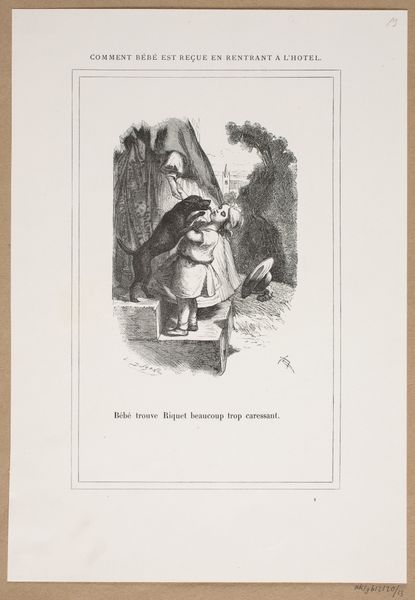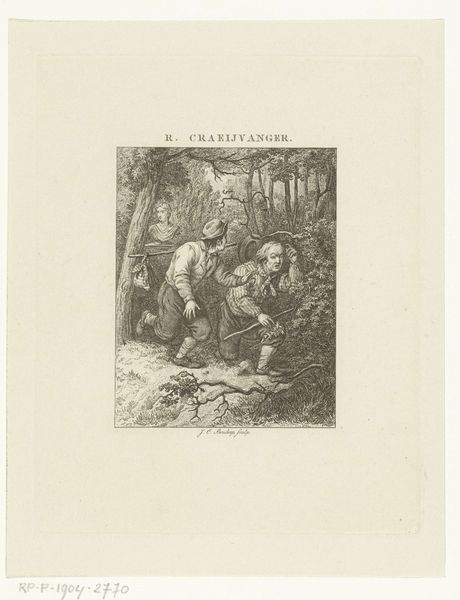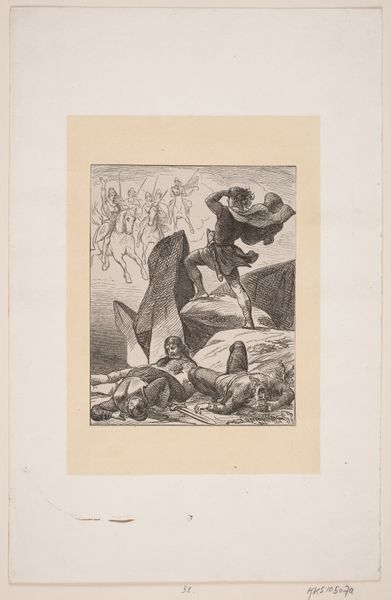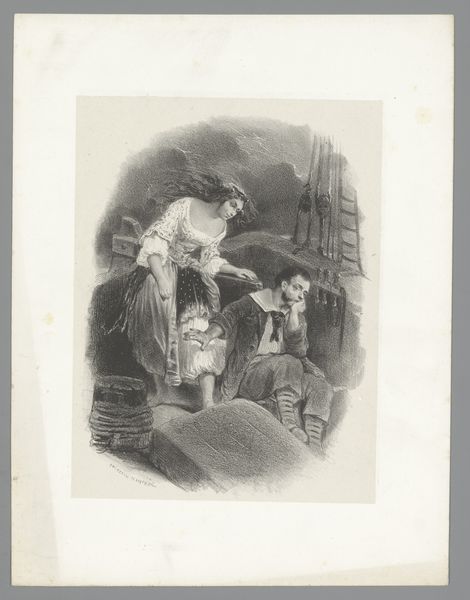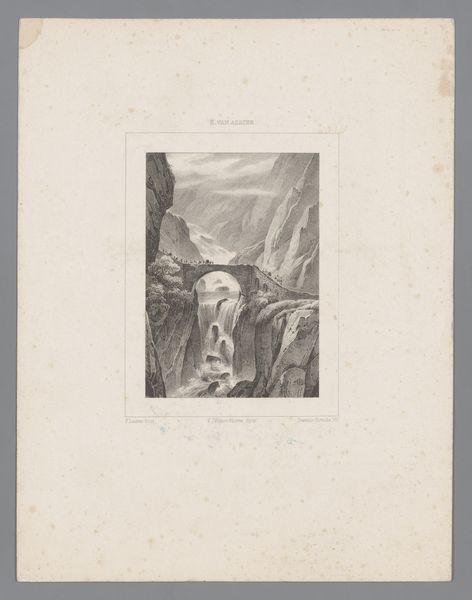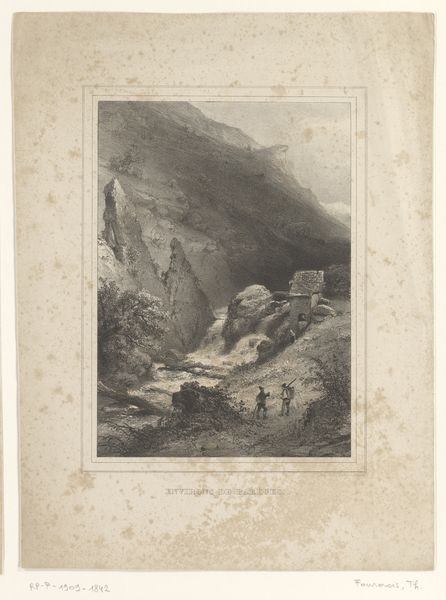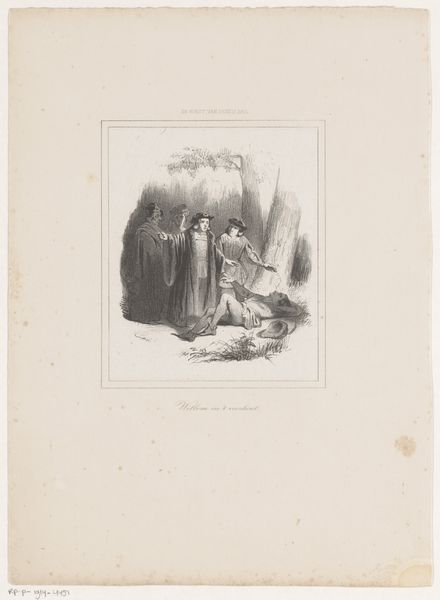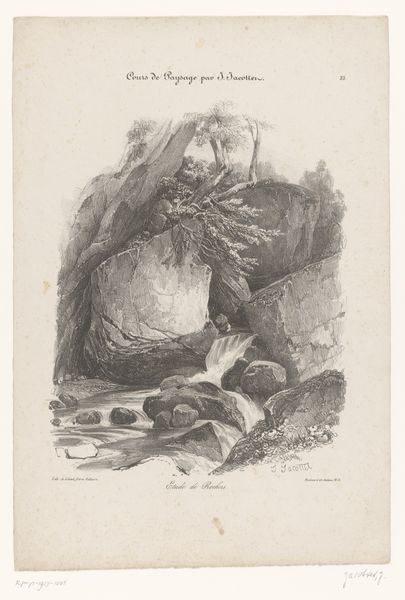
graphic-art, print, etching
#
graphic-art
#
16_19th-century
#
narrative-art
#
dutch-golden-age
# print
#
etching
#
caricature
Dimensions: height 275 mm, width 215 mm
Copyright: Rijks Museum: Open Domain
Curator: Here we have a piece titled "Spotprent over Billiton-schandaal, 1882," dating from 1882. The artist is Johan Michaël Schmidt Crans, working in the medium of etching. Editor: Woah, this is...intense! I’m immediately drawn to the central figure, stirring what looks like a cauldron of trouble. There's something very gothic, almost fairytale-esque about this whole composition. Is that an owl looming overhead? Gives me the shivers! Curator: Indeed. This is a caricature addressing the "Billiton scandal," a political affair involving tin mines. Notice the inscription “Billiton” and skulls hinting at something deeply rotten. The figures behind the man likely represent various political interests. The owl, a traditional symbol of wisdom, perches atop it all, a silent, somewhat ominous observer. Editor: Political, huh? All that swirling darkness suddenly makes a lot more sense. It feels very staged, too. Like a dark ritual taking place on some windswept crag. And that glow, beneath the cauldron…like dark forces being conjured. You can feel the air getting heavy just looking at it. What's up with the gnomes hanging back behind the rocks there? Curator: They could represent various stakeholders or factions involved in the Billiton scandal, whispering amongst themselves, possibly weighing their own involvement. Schmidt Crans likely wanted to portray this scandal as something more than just a business transaction; it’s a dangerous, almost supernatural endeavor. Editor: He definitely nailed that vibe! The details in the etching…incredible. The jagged lines of the rocks, the sinister glow…It’s all incredibly theatrical and slightly unsettling. You almost feel sorry for the guy in the middle; he's like a tragic figure in his own greed-fueled opera. Curator: It serves as a potent reminder that political machinations and corruption often lurk beneath seemingly ordinary business dealings. Schmidt Crans uses the gothic and absurd to expose the ugly truth of the Billiton affair. Editor: Absolutely. The darkness and all the visual exaggerations work to brilliant effect, a strong comment on political shenanigans— and they definitely still ring true today. I'll never look at tin the same way again!
Comments
No comments
Be the first to comment and join the conversation on the ultimate creative platform.
